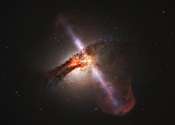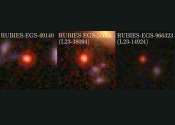Saturday Citations: The first Goldilocks black hole; Toxoplasma gondii metabolism; pumping at the speed of muscle
This week: Physicists conducted a biological study, engineers built a waste-recycling suit for astronauts (and worm riders), and astronomers identified the first known intermediate-mass black hole, and it's right here in ...









